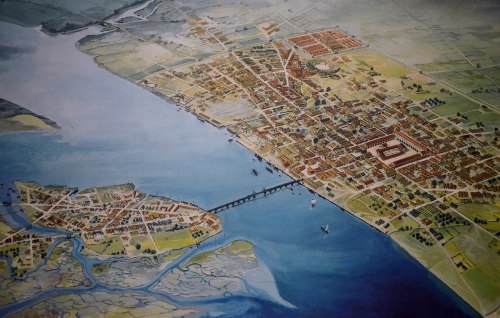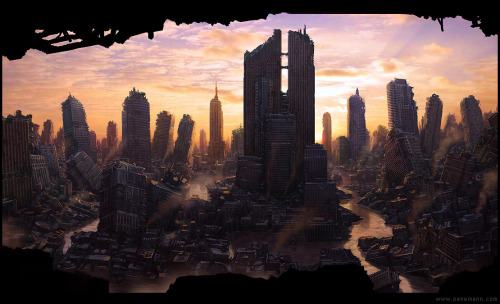The Death of LondonHistorians today mostly shirk from using the term “The Dark Ages” whe
The Death of LondonHistorians today mostly shirk from using the term “The Dark Ages” when describing the period of European history after the fall of the Western Roman Empire. After all in the rest of the world things were going quite well. Civilization was flourishing in places such as China, India, the Middle East, and Central America. The remaining Eastern Roman Empire also thrived with Constantinople becoming one of the largest and wealthiest cities in the world. However, for much of western Europe and Italy, things really did get pretty dark. As the Roman Empire declined and crumbled so too did the cities and infrastructure of western Europe. Since before the times of Diocletian the lot of the average Roman pleb grew worse as the Roman middle class disappeared and poverty increased. The increase in poverty resulted in less wealth to maintain public works and infrastructure. By 5th century many public works, roads, and buildings were decaying and crumbling from lack of maintenance. The decrease in wealth and decline of public infrastructure also led to a collapse of trade, further decreasing the wealth of the empire and making it less profitable to work in skilled trades. Urbanization decreased as unemployed people could no longer make a living in big cities, especially port cities which were suffering as a result of decreased trade, and thus they left the cities looking for work in the countryside, often as peasant farmers. All over western Europe the population of cities declined drastically. Add in barbarian invasions and warfare, which made the situation even bleaker.Perhaps one of the hardest hit provinces of the former empire was Britain. By the mid 4th century public infrastructure was already beginning to deteriorate and by the 5th century the population of British cities declined significantly. To learn more about this period I would suggested listening to the “Fall of Civilizations” podcast episode on post Roman Britain. A prime example of this decline is the city of London, or as it was called in ancient times, Londinium. Established in 43 AD London had become one of the largest and most important cities in the province as it was a bustling port city and commercial hub. By the 2nd century AD it had a population somewhere around 30,000 to 60,000 people. With the Antonine plague and the crises of the 3rd century the population began to decline. By the time Britain had made a Brexit from the empire in 410, the population was around 10,000. Archeological evidence shows that in large sections of the city buildings and houses had been raised and converted into farmland, pastures, or simply left as empty lots. By the mid 5th century a small number of wealthy families continued to dwell in what was essentially a gated community surrounded by the ruins of a dying city. By the end of the 5th century, London was an empty ruin. Essentially, the city entirely ceased to exist, population zero.For the next century or century and a half London would remain an empty ruin. In the 7th century the city was refounded by the Anglo-Saxon as “Londonwic” although the Anglo-Saxon city was located outside the walls of the Roman ruins. It wouldn’t be until the 9th century during the reign of Alfred the Great that people would settle within the Roman walls of the old city and it wouldn’t be until the mid 14th century that the population of London would recover to what it was in the 2nd century. -- source link
#history#ancient history#ancient rome#british history#london#dark ages

